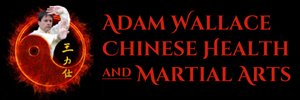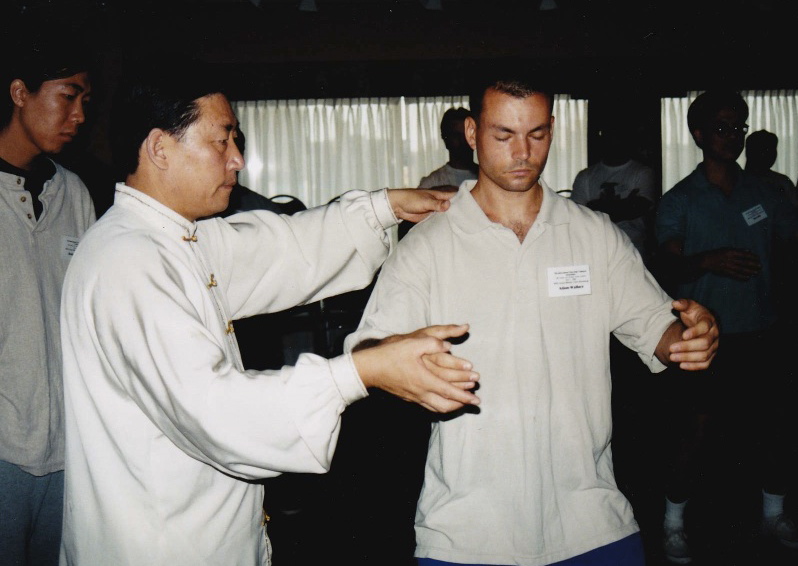“What is the ‘secret’ to skill?” The answer to this question invariably yields the response, “Practice”. And, this is very true; there are no ‘secrets’, but the more accurate answer should be, “Right Practice”, or “Correct Practice”, as wrong practice is the equivalent to hammering a bent nail into the wall. Pounding the hammer harder onto the bent nail will not make the nail become straight, and go into the wall properly, as a result. In fact, it will only become even more bent and deformed. Similarly, practicing hard, without performing the skill correctly and following the principles, will not produce favorable or productive results, and will often result in negative consequences and side-effects. Getting the skill right demands paying focused and consistent attention to two aspects – the Principles and the Details – assuming these have been adequately taught and explained. Both are important, for any Qigong or martial art skill to work effectively, in order for Qi to flow smoothly unimpeded throughout the channels, and movement to become natural, or for defensive and offensive technique to work. We cannot just blindly, or mindlessly practice ad nauseum, and assume that we are maintaining and upholding them. That is no way to ever improve and develop.
Over generations, the number of details will increase as the skill develops and becomes clearer, more refined and defined. This is how a skill evolves and improves over decades and centuries. With different teachers the details may differ, as to how each individual teacher was taught, but the principles themselves should never change, as they are the very essence of the form, the foundations upon which the skill is built. For example, in Chen Style Taijiquan, with the form movement ‘Cloud Hands’, one teacher may pass his hands at eyebrow level, while another may do so at shoulder level. The teacher will expect students to follow suit, correcting the students to his ‘way’. Is one way right and the other wrong? In this case, no. The ‘principle’ holds that the hands must be carried no lower than the shoulders and no higher than the eyebrows. In other words, as long as the principle is not broken, these are just ‘details’ and doing either way does not matter. The details, in this case, are less important than the principle of moving correctly, from the waist and co-ordination of stepping (opening and closing), and co-ordinating the changing palms with the transference of weight within the legs and feet, synchronizing upper and lower body. Many practitioners miss this principle entirely, failing to engage the waist, and allow the hands to lead, with the feet stepping late. Thus, even if the hands are at the right height, it does not matter; the movement itself will still be fundamentally wrong. Therefore, the details are not as important as the principle.
When details, in general, are wrong, you might say that these are just ‘misdemeanors’, as long as the principle is upheld. The skill will appear a little ‘rough-around-the-edges’, a little ‘fuzzy’, or unclear. But, when the principle is wrong (the opposite of what it should be), then even if the details are mostly right, this can be considered a high crime, a capital offense (figuratively). With reference to health, if both the principles and details are not correct, internal Qi will not flow properly, or smoothly, and will become blocked, and externally the movement will appear visibly awkward, possibly even a little strange, and in some cases, dare I say, almost ‘comical’ to an observer. In these cases, the practitioner can even be harming him/herself! Anyone studying regularly in class with a solid teacher has little to be concerned about, but it is those that opt to study solely from books and videos, or a free class, under someone unqualified, that can easily fall into this category. Anytime we see Taijiquan in a TV commercial, or a movie, it is seldom, if ever, performed by an expert, but by an actor, or a lay person, the product of minimal experience or poor instruction, so naturally, it is quite painful for an exponent to watch, but is perfectly acceptable to the general public.
Movement, whether dance or martial arts, is human expression. Those that are proficient and have been trained formally see movement like a musician hears an instrument. Those not attuned to a high standard or exposed to authentic skill have no ‘eyes’ to judge when skill is right or wrong. When the posture is good and movement and Qi flow harmoniously, it is like listening to a melodic piece of music, in perfect acoustics. When movement appears stiff, and awkward, and posture deformed and distorted, it produces a jarring effect, like hearing a novice playing a screeching violin, or fingernails clawing down a chalkboard. In the case of martial arts, applying techniques, using brute force contrary to the principles, will cause the practitioner to expand more energy and strength than required, increasing the chance of physical injury to the initiator. This can take the form of a pulled muscle, torn ligament, pinched nerve and strained back etc.
Beautiful form, exhibited by the highest level masters, is not the result of happenstance or even talent alone. It is the result of deep understanding through ‘right practice’. Only once the mind grasps the principles and details clearly, can the body (and Qi) adhere and follow. If the mind cannot or has not fully or adequately grasped these concepts – because we never had them explained (possibly from following a teacher that never knew them or exhibited them to begin with) – then we we stand little chance of the skill ever becoming right, no matter how hard we may try. In this situation, one day it may be right (and we don’t know it) and the next day it can be wrong (and again we don’t know it). When we come to really understand, and can discern the difference through actual feeling, we will not alternate between right and wrong anymore, and the skill will only become clearer and clearer.
The ‘principle’ is simply teaching us to move in the most natural way, with economy of motion, just as a hawk rides the wind, or a squirrel bounds from tree to tree. Neither needs to think about the task at hand, nor has any flaws in accomplishing the movement. In the beginning, we need to spend a great deal of mental concentration and pay attention to making the principles and details right. This is due diligence, and showing the skill the proper respect it rightfully deserves. Many of us have to re-learn how to feel our bodies, as we have spent so much time outside of them; our society and activities being so externally driven. After much repetition, once the principle has been properly assimilated, we no longer need to think, we just do, and movement and technique become natural and instinctive. We no longer feel clumsy and awkward, uncoordinated and unbalanced. It no longer becomes a case of ever forgetting, or needing to remember, like riding a bicycle.
Those that initially learn a skill and believe they are immediately doing it correctly, having somehow instantaneously acquired its ‘essence’, and do not need to pay attention to the principles and details any further, are deluded, and will find true progress hampered, though they will most likely never even discover this for themselves. A great cross-section of practitioners have never been informed that it takes years of corrections (‘polishing’) under the guidance of a qualified teacher to reach a good standard. This, ultimately, is what differentiates the good from the bad practitioners in the public arena today. These skills are very subtle, and multi-layered and multi-dimensional, even the seemingly most basic ones! Once the principles and details are correct (closer to perfect), and have been repeated thousands upon thousands of times, absorbed so fully that we no longer need to think about them and remember them, then they become ‘natural’ and more ‘internal’. Then, and only then, can we consider having made some substantial progress on our journey.
– Adam Wallace

